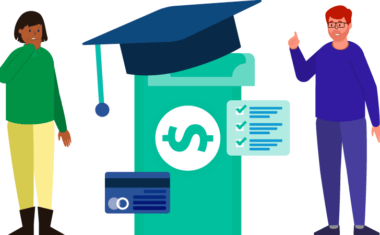Flatiron School vs. General Assembly Comparison

In this article
- What Is Flatiron School?
- What Is General Assembly?
- Flatiron School vs. General Assembly: What Are the Main Differences?
- Flatiron School vs. General Assembly: Learning Format
- Flatiron School vs. General Assembly: What's on the Curriculum?
- Flatiron School vs. General Assembly: How Much Does It Cost?
- Flatiron School vs. General Assembly: Job Outcomes
- Flatiron School vs. General Assembly: Pros and Cons
All the information provided in this article is published in good faith and for comparison purposes only. It is accurate as of October 2021.
As the cost of higher education continues to rise, online courses and bootcamps have in recent years become a viable alternative for those who want training in highly technical and well-compensated fields—without the steep price tag or years-long time commitment.
Spurring the e-learning revolution is the growing demand across all industries for software engineers, designers, data scientists, and cybersecurity professionals, which has resulted in courses and bootcamps that promise to prepare students for those roles—often from the comfort of their home and at the student’s own pace.
The rise of online bootcamps has been a good thing, with The New York Times reporting that virtual learning has been a “great equalizer” for adults and has made training and upskilling more accessible. During the Covid-19 pandemic, in particular, research found that e-learning has the potential to close a longstanding skills gap and democratize user engagement.
Many courses, designed specifically with a bootcamp-to-workforce pipeline in mind, have also optimized their programs to focus on the skills students need in order to land the job they want, thus maximizing efficiency and giving graduates a competitive advantage.
- Not ready to pick a bootcamp just yet? Head over to our bootcamp criteria guide.
- Want to find out how Springboard stacks up against other bootcamps? Check out our bootcamp comparison guide.
What Is Flatiron School?
Flatiron School is a New York-based private learning institution that offers in-person and online courses in software engineering, data science, cybersecurity, and product design.
Courses are offered on a full-time or “flex” basis—in the former, students attend nine hours of classes a day, Monday to Friday, for fifteen weeks and have the option of taking in-person classes at a Flatiron School campus or doing lessons online; in the latter, students go at their own pace using the same curriculum as the full-time program. Flex courses are typically completed in 20, 40, or 60 weeks and are asynchronous, which means students do not have to attend live virtual lectures or webinars.
The school has campuses in San Francisco, Seattle, New York, Austin, Chicago, Denver, Houston, and Washington D.C.
What Is General Assembly?
General Assembly is a New York-based private learning institution best known for hosting in-person courses across more than 30 physical campuses around the world on subjects such as data science, software engineering, UX design, and digital marketing. Around 20% of General Assembly’s students come via its corporate clients.
In addition to its in-person courses, which are offered on a full-time (12-weeks), part-time (10-weeks during evenings), and event-focused (a few hours) basis, General Assembly also offers remote learning for those who cannot attend one of its campuses. Its remote courses are conducted in real-time, with class meetings over Zoom, Miro, and Slack. There are also a limited number of “on-demand” courses where students can go at their own pace.
Similar to the Flatiron School, The real-time nature of most of General Assembly’s courses allows students to interact and collaborate with peers, have a traditional classroom experience with instructors and teaching assistants, and benefit from a sense of community.
Flatiron School vs. General Assembly: What Are the Main Differences?

There are a few fundamental differences between Flatiron School and General Assembly.
| Flatiron School | General Assembly |
| 15 weeks to complete full-time | 12 weeks to complete full-time |
| Physical campuses in San Francisco, Seattle, Austin, Chicago, Denver, New York, Houston, and Washington D.C. | Physical campuses in Atlanta, Austin, Boston, Chicago, Denver, Los Angeles, New York, San Francisco, Seattle, Toronto, Washington D.C., London, Paris, Sydney, and Singapore |
| Courses are offered in-person and online for both full-time and “flex” enrollments. Full-time courses are synchronous and require nine hours a day of engagement, Monday-Friday. “Flex” enrollments are asynchronous and students can go at their own pace. | Courses are offered in-person with remote options available in certain markets. Most remote courses are synchronous and require participation over Zoom and Slack. |
| Courses in software engineering, data science, cybersecurity, and product design | Courses in software engineering, data analytics, UI/UX design, digital marketing, data science, product management, front-end programming, Python programming, React development, and Visual design |
| Optional study groups and 1-on-1 time with instructors | Support from peers and instructors in a traditional classroom environment |
If you’re interested in a bootcamp that comes with a job guarantee and individualized mentorship, Springboard offers comprehensive, mentor-supported bootcamps in data science, UI/UX design, software engineering, cybersecurity, machine learning engineering, and tech sales.
Flatiron School vs. General Assembly: Learning Format

- Flatiron School offers in-person and online courses that can be taken full-time or part-time. Its full-time courses are synchronous and can be taken at one of its physical campuses or online—they require nine hours of engagement a day, Monday to Friday, for 15 weeks. It’s part-time courses, which it refers to as “flex,” are asynchronous courses in which students go at their own pace and can complete in 20, 40, or 60 weeks. Although flex students do not attend in-person classes, they still have access to Flatiron School’s physical campuses and can arrange to meet with peers or request one-on-one time with instructors.
- General Assembly offers a range of in-person, remote, and fully asynchronous courses. Specific course offerings are limited by market. Its in-person courses resemble a traditional school in which classes begin and end at specific times and attendance is expected at one of its campuses. Its remote courses mirror this, with the same curriculum and student engagement expected over Zoom and Slack. The average full-time immersive course takes three months to complete. The average asynchronous, on-demand course requires around 30-60 hours of work, although students have access to course content for up to 12 months.
Flatiron School vs. General Assembly: What’s on the Curriculum?

Both Flatiron School and General Assembly offer courses that prepare students for tech industry careers. Flatiron School focuses on software engineering, product design, cybersecurity, and data science, while General Assembly offers a greater range of courses.
| Flatiron School | General Assembly |
| Cybersecurity | UI/UX design |
| Product design | Data analytics |
| Data science | Data science |
| Software engineering | Digital marketing |
| Software engineering | |
| Front-end web development | |
| Visual design | |
| Product management | |
| Python Programming | |
| React development |
Interested in a tech career that isn’t offered by Flatiron School or General Assembly? In addition to data science, cybersecurity, and software engineering, Springboard’s comprehensive bootcamps include data analytics, UI/UX design, machine learning engineering, data engineering, and tech sales.
Flatiron School vs. General Assembly: How Much Does It Cost?
When it comes to online courses and bootcamps, the adage that you get what you pay for often rings true. Free or low-cost courses can be accessible, but often lack personalized support from instructors and mentors. Higher-cost courses can have a higher barrier to entry, but typically come with a comprehensive support system.
- Flatiron School’s full-time courses cost around $16,900; those who use its financing options pay interest in addition to tuition.
- General Assembly’s full-time immersive courses are around $15,950, with part-time courses costing around $3,950, and asynchronous courses around $950.
Looking for a more affordable but still rigorous introductory course to dip your toes into a subject before committing to a bootcamp? Springboard’s introductory courses start from $349 and come with both mentor and career coach support. Most introductory courses can be completed in four weeks, and the cost of an introductory course can be applied toward a full bootcamp at a later time.
Flatiron School vs. General Assembly: Job Outcomes

One of the indicators of an effective bootcamp or online course is whether students land an industry job upon graduation.
- Flatiron School reports that of the students who completed its courses in software engineering and data science courses, 86% landed a job after graduation.
- General Assembly reports that of the students who completed its full-time immersive courses in 2019, 90.5% of graduates received a job in a relevant field within six months of graduation.
Want the confidence of a job guarantee? Springboard offers a first-of-its-kind guarantee that students will score a job in a relevant field within six months of graduation—or they’ll get a full refund on their tuition.
Flatiron School vs. General Assembly: Pros and Cons

In the saturated e-learning market, both Flatiron School and General Assembly have emerged as significant players because their courses offer many benefits. But what works for one student may not work for another.
Flatiron School
- Pros: Flatiron School’s different learning formats cater both to students who want the in-person learning experience and those who need the flexibility of online, asynchronous coursework. The synchronous nature of its full-time program, which is applicable to in-person and online enrollments, can also be helpful for students who need the additional accountability of live classes, lectures, discussions over Zoom, and group work.
- Cons: Flatiron School’s full-time program requires a significant time commitment, with classes Monday to Friday and the average school day going for nine hours. Its mentorship and career counseling support is also limited to the period leading up to graduation, which means students don’t receive as much industry guidance throughout the course and can miss out on professional development opportunities.
Interested in a bootcamp that offers customized career counseling and regular calls with industry mentors from day one? Every Springboard student is paired with an expert from its vast network of mentors to ensure that they get guidance and support for projects, job hunting, and career decision-making.
General Assembly
- Pros: For students who prefer an in-person learning experience or need the additional accountability of face-to-face instruction, General Assembly is one of the few bootcamps with a physical campus. When it comes to remote learning, GA’s real-time virtual classes can be useful for students who want to replicate the classroom environment at home and collaborate with peers. GA’s part-time courses and weekend workshops are also suited to those who work during the day and want to continue upskilling in their spare time.
- Cons: General Assembly’s strength can also be its weakness because the real-time nature of its courses means it lacks flexibility. Students who want to learn asynchronously, on their own time and at their own pace, can only choose from a limited range of courses. Most courses require time spent on Zoom, Slack, and real-time participation.
Not ready to enroll just yet? Read more about the factors you should consider while picking a program in our bootcamp criteria guide.
Disclaimer: We’ve worked hard to ensure the information in this comparison guide is accurate and up-to-date. However, mistakes happen. If you spot an error, please get in touch with us at hello@springboard.com and we’ll correct it right away.
Since you’re here…
Interested in a career in cybersecurity? With or Cybersecurity Bootcamp, you’ll get a job in the industry, or we’ll return your tuition money. Test your skills with our free cybersecurity learning path, and check out our student reviews. We’re a safe bet. 🔒😉


